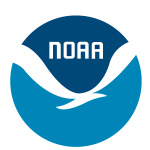- Industrie: Government
- Number of terms: 30456
- Number of blossaries: 0
- Company Profile:
NOAA Coral Reef Conservation Program, National Oceanic and Atmospheric Administration, U.S. Department of Commerce
Describes a plan for pre-agreed management actions as a function of variables related to the status of stock in question. For example, a control rule can specific how fishing mortality or yield should vary with levels of estimated biomass.
Industry:Fishing
A share of the total allowable catch (TAC) allocated to an operating unit such as a vessel, a company or an individual fisherman (individual fishing quota, IFQ) depending on the system of allocation. Quotas may or may not be transferable, inheritable, and tradable. While generally used to allocate total allowable catch, quotas could be used also to allocate fishing effort or biomass.
Industry:Fishing
Extends 12 nautical miles offshore of the United States. States exercise authority over marine fisheries in waters from the coastline to 3 nautical miles offshore, and out to 9 nautical miles for Texas, Puerto Rico, and the Gulf coast of Florida.
Industry:Fishing
1. Ratio of recruits to spawners (or parental biomass) in a stock-recruitment analysis. Changes in survival ratios indicate that the productivity of a stock is changing; 2. Number of fish alive after a specified time interval, divided by the initial number. Usually calculated on a yearly basis.
Industry:Fishing
Different stocks of fish that swim or school near one another, and may be caught together.
Industry:Fishing
1. A biological benchmark against which the abundance of the stock or the fishing mortality rate can be measured in order to determine its status. These reference points can be used as limits or targets, depending on their intended usage; 2. Specific values for the variables that describe the state of a fishery system which are used to evaluate its status. Reference points are most often specified in terms of fishing mortality rate and/or spawning stock biomass. These may indicate (a) a desired state of the fishery, such as a fishing mortality rate that will achieve a high level of sustainable yield, or (b) a state of the fishery that should be avoided, such as a high fishing mortality rate which risks a stock collapse and long-term loss of potential yield. The former are referred to as "target reference points", and the latter are referred to as "limit reference points" or "thresholds". Some common examples are F0. 1, FMAX, and FMSY.
Industry:Fishing
1. Management and conservation of the natural resource base, and the orientation of technological and institutional change in such a manner as to ensure the attainment of continued satisfaction of human needs for present and future generations. Such sustainable development conserves land and water, plant and animal genetic resources, is environmentally non-degrading, technologically appropriate, economically viable, and socially acceptable; 2. Development that meets the needs of the present generation without compromising the ability of future generations to meet their own needs.
Industry:Fishing
A plausible and often simplified description of how the future may develop based on a coherent and internally consistent set of assumptions about key driving forces (e.g., rate of technology change, prices) and relationships. Scenarios are neither predictions nor projections and sometimes may be based on a "narrative storyline. " Scenarios may be derived from projections but are often based on additional information from other sources.
Industry:Fishing
1. Long-term average biomass that would be achieved if fishing at a constant fishing mortality rate equal to FMSY; 2. The weight (biomass) of a group of fish necessary to produce maximum sustainable yield (MSY).
Industry:Fishing
